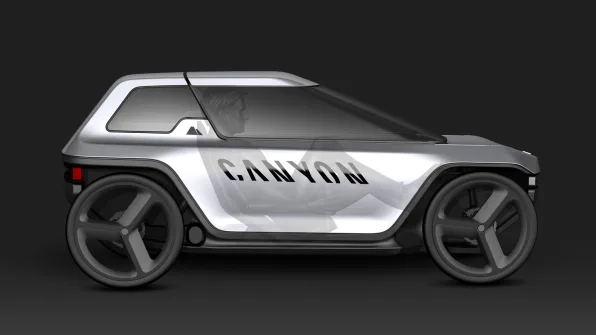
I was on the phone last week with an old radio friend, discussing the state of the industry as we begin our seventh month of COVID-flavored change. We talked Nielsen, headphones, layoffs, formats, and personalities.
And then out of the blue, he asked:
“Whatever happened with the ‘connected car?'”
And I did a double-take, just thinking about how the priorities have changed so much since the pandemic took over our world.
And there’s been no bigger effect – on both radio and the automotive industries – than what’s changed since COVID rocked our lives.
It wasn’t that many years ago we were holding our DASH Conference in Detroit – a mashup of radio broadcasters, automotive execs, and  technologists. We learned from one another, gained a stronger understanding of each other’s industries, and looked for synergies and common ground.
technologists. We learned from one another, gained a stronger understanding of each other’s industries, and looked for synergies and common ground.
That was still going strong in 2020. On the way back from CES this past January (it seems like a lifetime ago), Paul and I noted how automotive conversations were consumed by autonomous, electrification, and shared mobility. The coming of 5G would be the technical glue that would make it possible for cars and Artificial Intelligence to talk to each other, and to anticipate our wants and moods, from our commutes to our leisure time driving.
Consider how the automotive world – and with it, radio – has changed because of the pandemic:
- Most of the big auto companies and related brands had been investing heavily in shared mobility and commuting solutions. GM, Ford, and others had spent millions acquiring companies that were well on the way to building out those concepts. Originally, a competitor to services like ZipCar, GM shut down Maven in April. The writing was already on the wall.
- Remember Uber and Lyft? Up until the lockdown and concern about community spread, getting into a stranger’s car to hit the bars, make a meeting, or go to and from the airport was rapidly becoming smarter and less expensive than owning your own vehicle. All that changed when COVID came to town. And now the thought of commuting with other people even in a self-driving van has lost its appeal.
- Public transportation was also becoming a popular and savvy alternative to car ownership, especially in big cities like New York, Chicago, D.C., and others. That’s where a lot of podcasts and streaming content was being consumed. But pandemic protocols – or perhaps better put, paranoia – rocked that paradigm. The thought of jumping on a packed bus or subway has much bigger implications today than last year. And that’s changed the way people get to work, assuming they still have jobs, and travel to and from.
- Not surprisingly, the used car market is soaring, thanks to consumers flocking to the relative safety of driving a personal vehicle. Sellers like Edmunds and Kelly Blue Book confirm that prices are skyrocketing, thanks to increased demand.
Looking at just some of these impacts, it’s obvious there are both pluses and minuses for broadcast radio. Less public transportation and reduced ride-sharing should be good for radio, especially if it spurs the sales of personal vehicles – used or new.
But of course, the other major factors in this equation is rampant unemployment, as well as millions still working from home – now, for the foreseeable future, and perhaps for all time. Talk to commuters in once-clogged markets like L.A., D.C., and Chicago and they’ll tell you the freeways are nowhere near as jammed as they were just a few months ago. For an industry that makes its living on drive time, fewer cars on the road – with drivers and passengers – is not a good omen.
And with less commuting, that works against radio, especially during the traditional drive times that have dominated the ratings and consequently, advertiser demand.
As more and more white collar workers pull up stakes and move out of major cities to work remotely from the suburbs or the countryside, which radio stations will they be attached to – their old standbys or the outlets in their new cities of residence?
Whether it’s James Corden’s “Carpool Karaoke” or 98Rock’s Justin, Scott and Spiegel’s “In the Car With Random People,” COVID has taken its toll on radio being the soundtrack to the commute – if people aren’t commuting or ride sharing in the numbers they once were.
And then, there’s been the evolution of the dashboard itself. Automakers have long been in the process of giving away their most valuable real estate – and that continues to happen here in 2020.
Perhaps it started when Apple CarPlay and Android Auto first hit the scene just six years ago, many car companies swore they’d never turn over their smart screens to a couple of tech companies.
But it became clear to all the players that Apple and Google’s ecosystems were often easier for drivers and passengers to learn, navigate, and use mimicking the look, feel, and content of their coveted smartphones.
feel, and content of their coveted smartphones.
As this technology began to solidify a trend that had already taken flight – the trend away from embedded apps and content in these systems, replaced by importing smartphone content into the driving experience.
The movement to personalization of content and its on-demand access makes it seamless to pair a phone in a car, and then access its content during the drive – whether it’s the vehicle you own, borrow, or rent for business or leisure.
But it’s the voice component that might end up being an even more important third wheel. Both Google and Amazon are eager to ensure their “voices” are embedded in the cars we drive. It’s how our cars will talk to our homes, as well as other technology in our lives. For Amazon Echo and Google Home, the stakes are high.
And apparently, some of the automakers are more than ready to give up their branding and their entire identities to showcase their Alexa integration. A new TV spot airing now for Buick’s Encore GX SUV is astonishing in its relinquishment of the vehicles’ identification, seeming arguing with itself over whether its a Buick or Alexa.
Sure, Buick’s no Audi or BMW, but shucking its own branding to trumpet Amazon’s signature female persona is an extreme marketing tactic. But it may be indicative of how more automotive brands will let tech companies take control of in-vehicle technology – at least the infotainment component.
The technology growth spurt that’s energizing the driving experience is another warning sign for local radio. Even as all those workers find new jobs and begin to start commuting to work again, the competitive space in the dashboard has forever changed. From satellite radio to podcasts to streaming audio (and video), radio broadcasters aren’t just up against the call letters they see every month in those Nielsen reports. While radio may still be the time-spent leader while people drive, the disruption in the auto business will continue to affect habits and the ways in which consumers discover and consume in-car content.
The automakers are seeing their world through a different lens, too. Thanks to COVID, and the upstart Tesla, convention in the auto industry is being challenged by our changing society.
One of the transportation forms that has seen its own growth spurt during the pandemic is bicycling. The boom has been fueled by more bike paths, coupled with a more eco-friendly way of getting from Point A to Point B. Buying a bike has always been a great cost-effective option, but since the pandemic, just trying to find a two-wheeler or getting one fixed has created consumer delays.
And while biking is as popular today as ever, those of us who live in colder climes know that in just a few weeks, the option to use the Schwinn or Trek to get to work or the store won’t be so attractive.
That’s where the innovators take over. The newest concept car looks more like something less from Elon Musk and more like Hanna-Barbera. Dreamed up by German bike manufacturer Canyon, it’s a great example of how bike technology may be merging with cars.

Yes, it’s a recumbent electric bike with a body – complete with a windshield, a sliding roof for the warm days, and storage for groceries or a small passenger. With a range of nearly 100 miles and a top speed of 37 mph, the Canyon is a fascinating hybrid.
According to Fast Company’s Mark Wilson, it’s not a slam dunk whether the Canyon would fit in on today’s roads – two slow to keep up with cars (not to mention its short stature), but too bulky to occupy a bike lane.
But that’s why they call them concepts. The Canyon is another sign that COVID forces us to question all of our assumptions, even about the basics: transportation, entertainment, and the environment among them.
And I’m wondering whether there’s time for the NAB to encourage the Canyon team to drop a radio in that sleek dashboard.
I’ve embedded two videos below: a short spec video on the Canyon, followed by its Stone Age forerunner:
- What To Do If Your Radio Station Goes Through A Midlife Crisis - April 25, 2025
- A 2020 Lesson?It Could All Be Gone In A Flash - April 24, 2025
- How AI Can Give Radio Personalities More…PERSONALITY - April 23, 2025




That’s a fascinating ad, and I think a smart one. The Buick brand doesn’t have the contemporary cachet of, say, Tesla, and pairing it with Alexa is a hipness upgrade. All that reptition — “Buick, Alexa, Buick, Alexa” — enforces the idea that Buick is on the cutting edge. Also, note that “Buick” is spoken eight times. So I don’t think the brand is yielding to Alexa, as much as becoming best friends with the cool kid.
You may be right about that, Brad. And Buick is clearly trying to win the perception that were the first to “date” Alexa. They won’t be exclusive for long. Thanks for the comment.
Good read again, Fred!
I wonder if this is Buick’s “Led Zeppelin” moment?
JC, Buick certainly thinks so.
I see you’ve been drinking the 5G kool-aid with no mention of DSRC…
No, we’re out of Kool-Aid here. I’ve switched to the hard stuff.